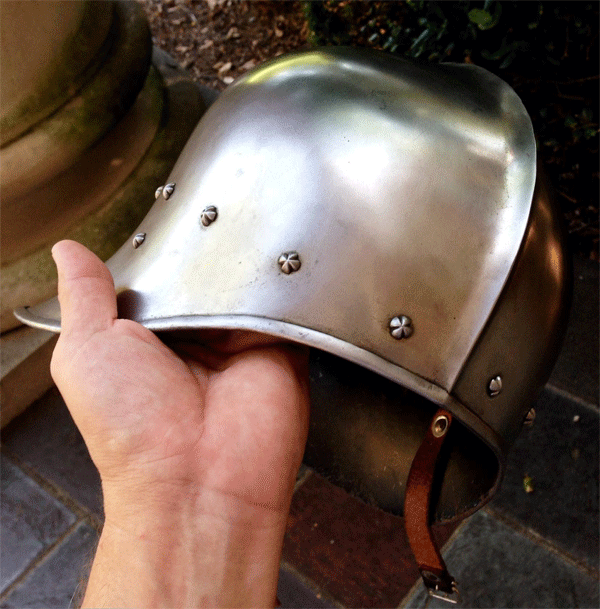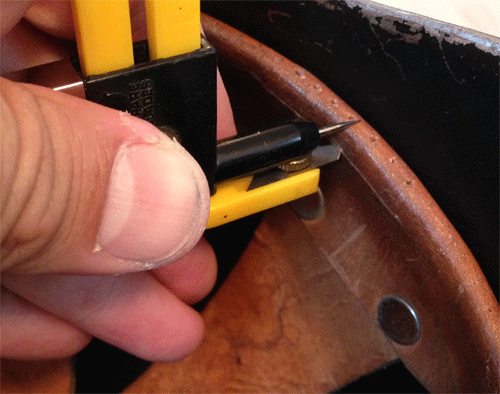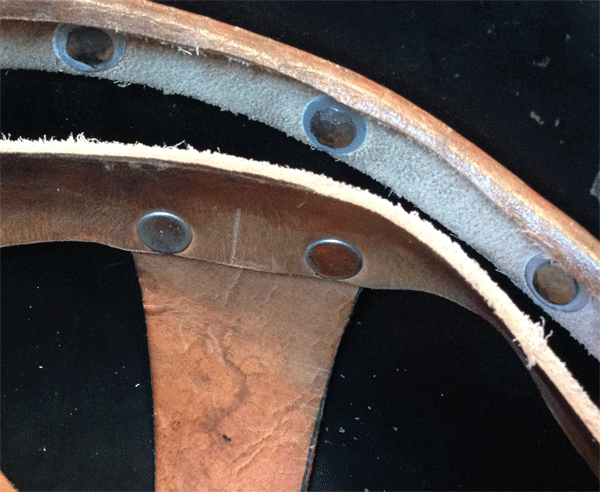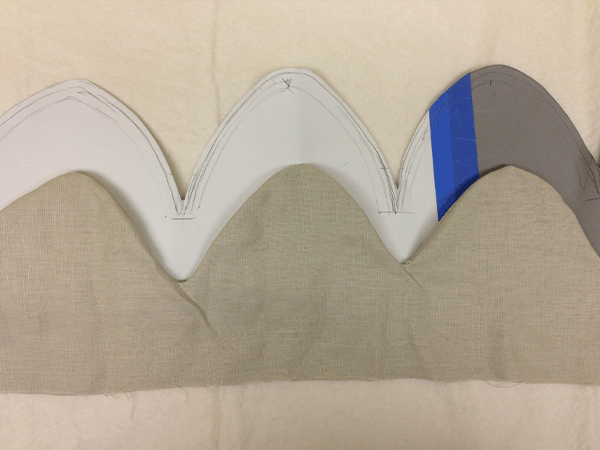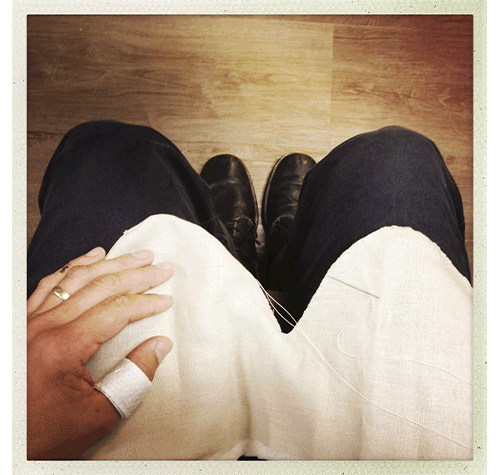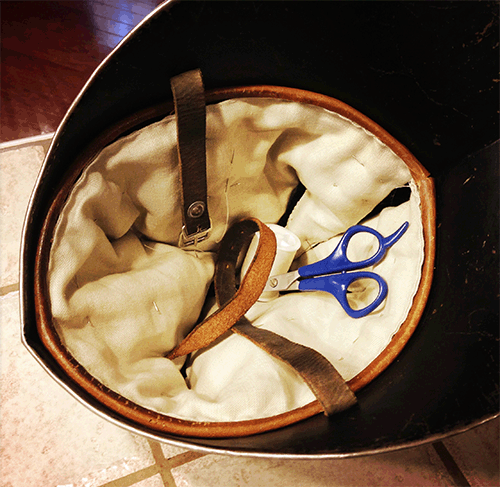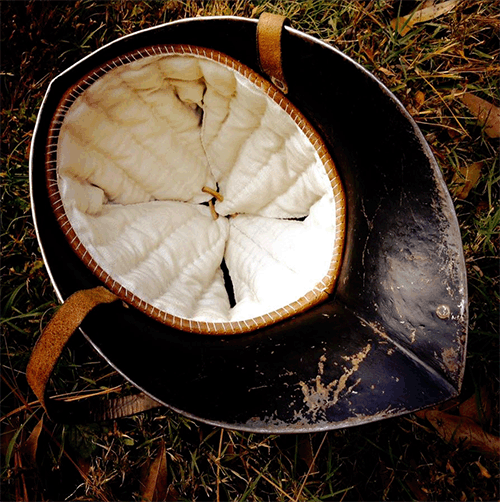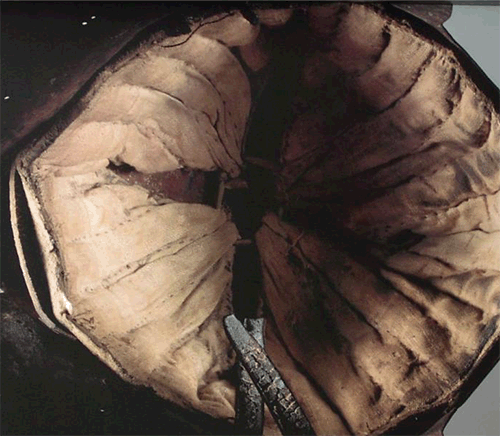What this sallet needs is a proper quilted linen liner, but I hated to lose those nice decorated rivets (and REALLY hated to have to replace them all, make a lining band, etc. in addition to making a new liner.
I had a brainstorm. I pierced the edge of the leather liner, then used a circle cutter to cut out the liner below (as seen here) that line of stitching holes, leaving the liner otherwise intact and giving me a perfect lining band for attaching the fabric liner. This took two quick passes of the cutter. If i wanted to re-use the liner I could easily rivet it directly into another helmet.
I'll be posting the results of this project, which probably will include two-point straps in addition to the new liner.
For now, if you have a similar project, consider grabbing one of these cheap tools: https://www.amazon.com/OLFA-9911-Compass-Circle-Cutter/dp/B000BK7NWC/ref=sr_1_6?ie=UTF8&qid=1475848888&sr=8-6&keywords=circle+cutter
